BRUCE LICHER Chats With ERNESTO GARCIA MARQUES from South Africa: All Things SAVAGE and More...
- Ernesto Garcia Marques
- Jun 5, 2022
- 21 min read
Updated: Jun 6, 2022
Savage Republic can be described as a post punk tribal industrial band but there is much more to their sound than that. I have loved this band for many years and decided to get in contact to find out a little more because more people should be listening to them. There are few bands that can be recognized by their drum beats alone but Adam and the Ants and Savage Republic are two of them. To do the band and it's many members justice I thought it would be more comprehensive to go right back to the genesis of the band when the guys were still students at the UCLA University before getting on to Savage Republic themselves. This interview was done with Bruce Licher, one of the founding members of Savage Republic.

Ernesto Garcia Marques: Hello Bruce and greetings from South Africa. I believe it all started when you started playing guitar in an experimental band called NEEF inspired by the No New York no wave compilation album in 1978. Studying photography, film, design and fine arts Bruce met Mark Erskine in a sculpture class. Mark went to NEEF sessions sitting on film cans and banging on them. So that is how it all started ?

Bruce Licher: Hello Ernesto. Yes, the first people I started doing music with were the guys in NEEF, who had already started playing together by the time I met them in late 1978 or early 1979. They were all self taught musicians, and they liked to improvise and see what kind of interesting music they could come up with. And because I was just learning how to play a guitar and was most interested in making unusual sounds with it I just thought this would be a perfect opportunity to start creating some music with other people. So I sat in with them during some of their rehearsal and recording sessions in the UCLA Fine Arts Department. We would go into one of the empty art studios at UCLA on a Saturday and Brent Wilcox, who was the keyboardist in the band, would bring some recording equipment and record everything we did. Mark Erskine, who I had met in a sculpture class, wanted to come and sit in as well, and I had brought some used film cans from one of the film-making classes I was taking, so Mark started playing the film cans, and then did some other scrap metal percussion as well. And then after about 6 months the NEEF project broke apart, so Mark and I continued working together on other projects.

E. I believe you were inspired and did a course called Independent Project where you had a professor advise you to do your project?
BL:The professor that I chose for my advisor on the independent project course was Chris Burden, the well known conceptual artist who had been hired by UCLA to teach a class called New Forms and Concepts. And that was where I first met the guys in NEEF, in Chris Burden’s class. And then the following year I decided to do the Independent Project course, where a student could design their own project, find an instructor to be their advisor on the project, and then you spend the semester creating the project. I decided I wanted to make a record as a piece of fine art, and so I created the Project 197 7” EP. I really enjoyed making that record and decided I needed a name for the record label. At the time I had no idea if I was ever going to make any more records, but I just thought that there should be a record label name. So I tried to come up with a name, but everything just sounded kind of forced and not right. And I thought, well, what is this? It's an Independent Project Record, so that's what I'll call it.

Licher released the lo-fi 7” EP Project 197 as IP001 in May 1980, which was followed by the Bridge EP (IP002), recorded in a labyrinthine service tunnel system running beneath the UCLA campus during the time he had access to the tunnels while making a student film. Licher and Erskine then joined forces with Jeff Long and Philip Drucker (aka Jackson Del Rey), Licher and Drucker having already collaborated in another group called Them Rhythm Ants.
BL: The very first time that the four original band members of Savage Republic played together was at UCLA. I had gained access to the subterranean utility tunnels to make a student film. For the Bridge 7” I thought, “Wouldn't it be interesting to go down into these tunnels to make music?" So my friend Dan Voznick (who was singer in a band called Afterimage at the time) and I went into these tunnels with guitars and amps and a small portable tape recorder, and that’s how the Bridge 7” was recorded. Shortly after that, while I still had the key to the tunnels, the four of us who became Savage Republic went down with our gear and a boombox and recorded everything that we did that day onto a cassette tape. We listened and thought, "Wow, that's pretty unusual, interesting stuff. We should keep doing that."

Initially going by the name Africa Corps, the band played a number of gigs in LA including the underground clubs The Brave Dog, Anticlub, Al’s Bar, and one gig at the Whisky-A-Go-Go on the Sunset Strip in Hollywood. As Africa Corps the group set about recording a tense, volatile debut album early in 1982, but had problems with the name. They didn't want people to think they were Nazis remembers Licher, so they decided to change the name to Savage Republic a week before the Tragic Figures album came out in May of 1982. They liked using the word Republic in the name because they did everything themselves: composing and recording the music, packaging it and selling it - a self-contained unit. The band then needed to find out what kind of a Republic they were. Licher recalls how "the name Savage Republic popped into my head while we were all together brain-storming, but my first thought was it was too obvious. Then Phil came up with the same name without me saying anything, so there it was. Some of our shows were quite intense, with the oil drums, scrap metal percussion and experimental sounds, and we felt that the new name just fit the band perfectly."
E: Is that description how you remember it and the way the band formed?
BL: Yes, that's how I recall it happening. The first time the four original band members of Savage Republic got together to play was at UCLA. And yes, we went down into the tunnels with our musical equipment and a boombox and we recorded that first jam session. I was listening to that original cassette tape recently and at some point we will make more of that recording available as there are some quite interesting, very skeletal versions of songs that ended up on Tragic Figures (one song from that first rehearsal tape, called The Happy March, did end up getting released on the limited edition Independent Projects 10” box set in 1990).

E. I believe your main influences included Throbbing Gristle, Glenn Branca, The Ventures, Pink Floyd, Greek bouzouki music, soundtrack music, Ennio Morricone, Middle Eastern music, late Sixties psychedelic music, the early post punk stuff like Gang of Four, Joy Division, The Cure and things like that. And then Jeff Long's fondness for Jaco Pastorius and hardcore punk rock. Jeff joined hardcore LA punk band Wasted Youth and appeared on their Reagan's In LP at the same time as you were recording Tragic Figures. That is a very healthy and diverse bunch of influences and some of those influences are obvious in Tragic Figures but more than anything the tribal industrial sounds are the strongest. Would you agree?
BL: Yes. And a lot of that has to do with the fact that when we went down into the subterranean utility tunnels with our gear and the boombox for our very first rehearsal, what we had were two bass guitars, two amplifiers, a fuzz box, a really funky wooden drum kit and some scrap metal percussion. And that was what we used to make our initial music with. Jeff Long was the one playing his bass through the fuzz box and really just created these weird nasty sounds, and he had a very playful way of playing. He didn't use a pick, he was definitely a finger player, fingers on the strings bass player and kind of got into some funky rhythms at times. And his way of playing, plugged through this really weird old fuzz box, created some great sounds. It's been fun to revisit some of the early rehearsals and demos that we've done, where Jeff was playing the fuzz box. We are currently working on an expanded reissue of Tragic Figures for the 40th Anniversary of the LP, which will be released in early May 2022. It will include some of the early demos that we did, that were recorded in the concrete parking garages at UCLA before we went into Radio Tokyo studios to finish the recording of the album.
E: Can you tell us about your debut album; Tragic Figures which remains one of my favorite albums of that time? Would you say "Tribal Industrial" fully describes what you were trying to do?
BL: The Tragic Figures album is kind of a mishmash of various recordings and styles. Most of it was recorded at Radio Tokyo Studios, which was a small eight track studio by the beach in Venice, California that had been recommended by some friends. I had originally started trying to record the album on a TEAC four track reel to reel tape deck that I had. We started to rehearse in the concrete parking garages at UCLA once we found electrical outlets in the walls, so we just drove in and plugged in our amps and played until, you know, we'd get kicked out. But we'd go in on the weekends when there wasn't really anybody else around and record on this TEAC four track and so there's a number of interesting early versions of songs that appear on this expanded reissue of Tragic Figures. The very first songs we created were exploring more of that whole tribal industrial sound, drums, percussion, basses, rhythmic type stuff. But then we started bringing the guitars in. Philip Drucker, who went by the name Jackson Del Rey, brought in some some nice Middle Eastern sounding guitar work. And then I saw the first performance by Glenn Branca and his group of 4 guitarists at Cal Arts in Valencia, about 30 miles north of Los Angeles in early 1981. And I was just blown away by the sounds that he was getting from his Unison tuned guitars. I immediately thought that I needed to tune my guitar that way and see what I could do with that sound. So before our next rehearsal I took all the strings off of my guitar and restrung it with all the same strings tuned to the same note. I had recently found a copy of Faust IV, the fourth album by the German 70’s group Faust, which opens up with a song called Krautrock, and I just thought that was an amazing piece of music. So when we got together for our next rehearsal after I had seen Glenn Branca play and had re-tuned my guitar, I played that Faust song Krautrock to the other guys in the band and said “We should do something like this.” So we just sat down with my unison tuned guitar and Jeff Long on bass and Phil and Mark playing percussion, and we came up with the song Exodus. We named it that because it kind of reminded us of the theme from the movie Exodus, the early 60s movie which was scored by Ernest Gold. There was something about the song that we created that reminded me of the theme from that movie, so we decided to name our new song Exodus as well.
This is an early recording of Exodus from the expanded reissue of Tragic Figures,
the debut album by Africa Corps, released under the name Savage Republic:

Savage Republic took great care with their album covers and they are works of art in themselves. Licher learned the basics of letterpress printing and went about designing and printing a postcard advertising their debut album release. Then, utilizing a hand-fed Vandercook cylinder press, he printed 1000 album jackets for Tragic Figures during a second class at the Women’s Graphic Center in downtown Los Angeles. Every printed piece was subtly different, each one hand made though mass produced. The printing was done one color at a time and the first 3-colour run of 1,000 album jackets were unique and unlike other album covers, which is what Licher was looking for. Tragic Figures also included serendipitous found images. As Licher reminisces, “Phil Drucker created the collage on the back cover and I asked a Lebanese co-worker to translate all of the song titles into Arabic for us. Technically the album says "Persons Unlucky", which is the way he translated “Tragic Figures”.” Independent Project Records produced five letterpress editions of Tragic Figures, each of 1,000 copies, except for the fifth, which was 875. Each edition had varying covers because Licher was trying to keep things interesting for himself, as he spent many hours hand-feeding sheets of card stock through the press. He switched the colors around on the later editions and by the fifth edition he ran one of the colors through upside down for the entire run, which made for quite an abstract cover. There were also UK and Greek editions on vinyl, as well as a French edition through the Sordide Sentimental label. Interest in the album also saw S.R. booked to open for Public Image Ltd. in San Francisco and Los Angeles in November 1982, in doing so playing to their biggest audiences so far.
The French edition of Tragic Figures, released on the Sordide Sentimental label,
features alternate cover collage artwork by Jean Pierre Turmel.
E: Wow Bruce, as an old printer I am really impressed with that. So what you were doing with your covers was almost like screen printing. Did you go to so much trouble with your CD covers as well because they look like they are also printed the same way? It must have been a big thing for Savage Republic to open for Public Image, Ltd?
BL: I learned the basics of letterpress printing on a hand-fed Chandler & Price platen letterpress, and then went on to print the album jackets on a Vandercook hand-fed cylinder press. One color at a time, 1000 album jackets printed flat, front & back at the same time. Then the printed pieces were sent off to an album cover manufacturer where they ran them through their fabricating machine and they came out the other end as finished album jackets.
“When we were starting the band and then working on the album the early 80’s Iranian Revolution was happening, and since there were a number of Iranian students at UCLA we would see all of these fliers around campus that the they had posted for getting together and talking about what was going on in their homeland. We found these revolutionary flyers and posters really interesting, from a conceptual as well as an aesthetic point of view. Phil had created a collage from a number of these flyers that he had pulled off of telephone poles and announcement boards around campus, and I used his collage on the back cover, translating the original art work into letterpress printing plates and hand-carved linoleum blocks. I then asked a Lebanese co-worker to translate all the song titles into Arabic for us, which I then copied from his original sketches to make printing plates or carved linoleum blocks of the Arabic script.”

“Opening for Public Image, Ltd in San Francisco and Los Angeles were our largest audiences by far up to that point. After the LA gig, when we went back to play at the Anticlub we could definitely see the increase in attendance.”
Savage Republic released their first 7" single titled Film Noir as a numbered edition in June 1983, catalog # IP009, a year after Tragic Figures was released. The band grew into a five piece with the addition of arranger and multi-instrumentalist Robert Loveless. The cover featured a photo of the Savage Republic flag that Licher had designed and made, flying in the wind, and again, each pressing was unique, with every new edition or pressing of a Savage Republic record being re-designed in one way or another.

This is Film Noir:
The flip side of Film Noir was a fortuitous cover of O Andonis by
Greek composer Mikis Theodorakis and here is Savage Republic's version:
And this is the original by Mikis Theodorakis:
E. Tell me about Film Noir and the flip side O Andonis. I read that you did that song just for fun because you thought it was beautiful but you did an instrumental version. Did you ever try to sing the original Greek lyrics? I believe one of your distributors was from Greece and copies were shipped to Greece resulting in Savage Republic being more popular in there than any other European country. I also read that the song was written in the 1960's and it was banned in Greece because it was seen as revolutionary.
BL: We recorded the Film Noir 7” during a short period of time that Jeff Long was focusing more on Wasted Youth, so we brought Robert Loveless into the band to complete the two songs, and then when Jeff returned we continued on as a five-piece. The flip side of the single was a cover of O Andonis, and actually, I didn't even know that there were Greek lyrics until later. The original version of the song that we heard was from the soundtrack to the movie Z, which was a record that I had recently purchased and was really enjoying. There is an instrumental version of the song on the soundtrack, so that recording was what inspired us to do our own version of it. When we released the single in 1983 IPR had just gotten a new distributor in Chicago, so I sent him a copy of the single and it turns out he was Greek. When he got the single, he phoned me up immediately and said “Bruce, you didn't tell me you recorded a Greek song! My brother has a record shop in Athens, send me 100 copies.” And so he started sending hundreds of copies of our records to his brother’s record shop in Athens. The distributor's name was Nick Hadjis, and he and his brother were really excited by the fact that here we were, this LA post punk band, and we were doing psychedelic covers of Greek music. And they just thought that was so wonderful. So Nick had his brother find a whole bunch of Theodorakis albums to send back to me, and I received this box of 25 or 30 Theodorakis albums in it. And it was only after I got those albums that I realized that there was a vocal version of the song. As for being more popular in Greece, I know we had a lot of fans in in Germany and the Netherlands and other countries as well as Greece. I do think a lot of our European audience came from the fact that the Sordide Sentimental label in France licensed Tragic Figures for release in Europe early on, and they sold a lot of copies throughout Europe. But I think that because we were appreciative of Greek music and wanted to make our own versions of some of the songs, that the band has a special relationship with the Greek fans. When we finally did go to Greece on our first European tour in 1987 we were treated very well, were interviewed on Greek National Radio, and we sold out two nights at the main rock club in Athens. It was a great, really wonderful experience. The Greek audiences have been phenomenal and we're very appreciative of their interest in our music.

On 24 April 1983 Savage Republic took part in the semi-legendary Mojave Exodus gig with The Minutemen after which Jeff Long left the band. The remaining four members, Phil Drucker, Robert Loveless, Mark Erskine and Licher, began recording a second album but after the basics were laid down for six new songs it became obvious to Licher that he and Drucker had very different ideas of how they wanted to finish the album, so they split up. "Phil and I reached an agreement whereby he and Robert would keep the music that we had worked up, since it was mostly based on song ideas they had come up with, and I'd keep the name, with Mark Erskine continuing to work with me on a new line-up of the band.” And so those six songs became the basis for the 17 Pygmies album Jedda by the Sea....
Here is a link to Last Grave at Dimbaza from that album;
And another track, By the Sea, from the 17 Pygmies album Jedda by the Sea:

BL: About the Mojave Exodus gig with The Minutemen, there is now a Desolation Center documentary film, which is about the Mojave Exodus event, as well as the other events following that Stuart Swezey promoted under the name Desolation Center. I helped to organize and find locations, and performed at the first two of the desert events, and also letterpress printed the tickets for four of the events. That film is now available for streaming and is also on DVD. It's an excellent and compelling documentary of the events and I recommend it to anybody who is interested in the kind of outsider music scene that was happening in Los Angeles in the early 1980s. There's a lot of Savage Republic music that is used in the film, as well as music from the group Scenic that I formed in the 1990s after the original Savage Republic broke up.
E: Your Scenic music is lot more melodic than Savage Republic though you still have that all important beat. Some of the tracks as with Savage Republic are Middle Eastern inspired. So you combine that African and Arabian influences to create your own unique sound and style?
BL: As far as having a unique sound and style, I and some of the other members of Savage Republic are not professionally trained musicians. And so one of the interesting things about the music that we created is that is that because of our limitations as musicians we will tend to take certain styles or influences from other places, but they become uniquely our own partly because of the fact that I can't just pick up a guitar and play something that I hear on a record. But on the other hand, I can create something that is a unique sound and so that's what I have done for the entire time that I've been creating music.
After the split of the original Savage Republic in 1983, Licher set up his own letterpress shop and with Independent Project Records started to release a stream of acclaimed singles and albums by artists as diverse as Human Hands, Kommunity FK, Camper Van Beethoven, Half String, For Against, and Abecedarians. As this workload increased, through necessity Savage Republic records were licensed first through Chameleon Music Group, followed by Fundamental.
E. Can you tell us about this please?
BL: From the time I started Independent Project Records in 1980 until early in 2020, IPR was something that reflected my own aesthetics and taste in music. I would choose to work with bands and artists whose music spoke to me in some way, and so it was largely a reflection of music that I would want to own. I was in a fortunate position of being able to package it in a way that I felt was appropriate and meaningful for the music that was being released, although it was not a very profitable endeavor the way I chose to do it. After Scenic ended in 2003 I re-focused my energy on my printing and design business, with only an occasional release on the label.
Then in late 2019 at a film festival screening of the Desolation Center film I reconnected with an old friend, Jeffrey Clark, who was the singer in the late 80s LA band Shiva Burlesque. I had worked with Shiva Burlesque through a side label to IPR called Nate Starkman & Son, which was distributed through Fundamental Music. Jeff and I started talking about the idea of reviving the label again, and that has now happened. Jeff and I are currently both doing A&R for the label, and I'm working on the design and the packaging, producing many of the jackets for our releases on the letterpress. We have a lot of new projects in the pipeline, and the focus is largely reissuing music we feel is very special and unique, or releasing previously unreleased archival recordings that we feel are needing to be heard and appreciated. Our main focus is on music from the 80s and 90s, although we will eventually extend our reach outside of those decades as well as we are now starting to work with several current artists whose aesthetic we feel fits with what IPR is all about. One of our most recent releases is an expanded reissue of Shiva Burlesque's second album Mercury Blues. It includes an entire second album of previously unreleased recordings titled Skulduggery.


E: What about Savage Republic and their legacy since the split?
BL: Moving forward, there will be Savage Republic and Scenic reissues on IPR with previously unreleased recordings made available. We are currently working on preparing a release of the live recording made during the Africa Corps gig at the Whisky A-Go-Go in December of 1981, and are starting to conceptualize the best way to release an expanded version of the Ceremonial album from 1986. As for Scenic, we recently released an expanded version of the 1995 debut album Incident At Cima, which was conceived as a soundtrack for the remote East Mojave Desert and features a song called Carrying On To Cadiz which was used as background music during the main title sequence in the Desolation Center film to great effect. We are also looking at putting together a Scenic singles and rarities compilation release, as well as making the band’s third album, The Acid Gospel Experience, available on vinyl for the first time.
To receive the latest news about the goings on at IPR,
please sign up for the IPR DIspatch newsletter here:

Savage Republic regrouped during 1984 with the addition of Greg Grunke, Thom Fuhrmann and Ethan Port to original members Licher and Erskine. Still utilizing metal percussion, the new group began to work on new instrumental material, with soundtracks in flavour, and more immediately accessible than with the Tragic Figures era. The first fruits were the four tracks on the Trudge EP, released by prolific Belgian indie label Play It Again Sam, after which the band were further bolstered by the return of Robert Loveless at the beginning of 1986.
This is Trudge:

E. Quite a great post punk groove you got going there and I am sure the instrumental songs would make a great soundtrack. Have you considered doing soundtracks? It seems like you were really freshly inspired again on this EP....
BL: Yes, we were definitely freshly inspired with the addition of the new members, and I have to say that of all of the Savage Republic material, the Trudge EP is probably my favorite. That is the direction that I wanted to be going with my music and I definitely wanted to do film soundtracks. It's been wonderful to see our music both with Savage Republic and Scenic being used so extensively in the Desolation Center film, because it works so well. We are definitely interested in licensing our music to soundtracks, but if there was an opportunity to create music specifically for a film soundtrack, that would also be an interesting thing to do.
“During 1985 Savage Republic was busy working on new material and recording our second album Ceremonial. My original idea was that Ceremonial was to be an instrumental album, as I felt like I didn't want any lyrics or words to get in the way of what the music was saying. A lot of the songs on Ceremonial have three guitars playing with bass, drums and keyboards, and there's such a beauty to the interweaving melodies and themes of the of the guitar work. And I love being able to listen to that and just meld into the sounds. I love music that takes you somewhere, that allows you to go somewhere in your mind. And a lot of times, if there's somebody singing on top it takes your focus away from the music and you start thinking more about, okay, what are they singing about, what are they trying to say with their lyrics. And it's not that that's bad. That's, I mean, that makes sense for a lot of music. But it isn't necessarily where I wanted to go with music, what I wanted to express through music. Obviously, some of the other band members felt differently. And that was one of the reasons why there are vocals on the original release of the Ceremonial LP on the first side. But when we had the opportunity to do the CD a few years later, and combine it with the Trudge EP, which was pretty much all instrumental, it just made sense to me to do an instrumental version of the album on that CD release.”
E. Any last words for the people in South Africa who love your music? It may interest you know that you have a hardcore cult following down here in Southern Africa. You should visit us sometime.
BL: We are always happy to know of anyone who appreciates the music that we have created, and I hope that this helps the band’s South African fans get a better feel for some of the history behind the group. To fill in some of the gap between the end of the interview above and the present day, the band played a short reunion tour in 2002 which included myself, Ethan Port, Greg Grunke, Thom Fuhrmann and Robert Loveless.

Then a year or so later Ethan, Thom and Greg decided to regroup the band with several new members. They have continued to record new music and play occasional tours in the US and Europe, solidifying into a core group of Thom Fuhrmann and Ethan Port, with bassist Kerry Dowling and drummer Alan Waddington. Philip Drucker and Robert Loveless recorded several albums as 17 Pygmies, and Phil continues to record new 17 Pygmies music to this day with other musicians including Greg Grunke and Jeffrey Brenneman. As for myself, since Scenic stopped in 2003 I’ve recorded a variety of instrumental solo recordings, have collaborated with Henry Frayne from the instrumental group Lanterna, and am currently working on recordings with my wife, artist Karen Nielsen Licher, as SR2.

In early 2020 a 240-page book called Savage Impressions was published by the P22 Type Foundry, featuring an overview of my graphic design and letterpress printing work, which includes several chapters on work I created for Savage Republic and Scenic. In addition to being copiously illustrated with over 1000 images, the book includes a lot of information about the events and printed pieces, as well as some of the processes used to create the work. A limited edition vinyl LP called Tape Excavation was released in conjunction with the book, which compiled previously unreleased recordings ranging from a Project 197 out-take in 1980 to a current song by SR2 recorded in 2019. The LP includes several pieces related to Savage Republic and Scenic, as well as some of my collaborations with Lanterna and members of Boxhead Ensemble, plus a few solo recordings. Copies of both of these projects can be purchased through the IPR website Shoppe (link below). And yes, it would be wonderful to visit your part of the world someday. I do hope that can be made to happen at some point. Thank you!
These are the current websites for Independent Project Records and Independent Project Press. New and upcoming archival releases will be made available in the IPR web Shoppe, along with printed ephemera from the Independent Project archives:
This is the incredible Savage Republic discography at Discogs:
This is the current band’s Mobilization website where you can join their mailing list:
and if you would like to check out Facebook pages for IPR and the current band,
you can do so here:
So that is Savage Republic folks, not just an industrial band, more than a post punk band, an original band consistently creating exciting new sounds and challenging the boundaries. Do yourselves a favor and check out Savage Republic. Tragic Figures is a great place to start.
Cheers, Ernesto Garcia Marques, Jive Talking and Eyeballing, South Africa. 20/0904/2022.













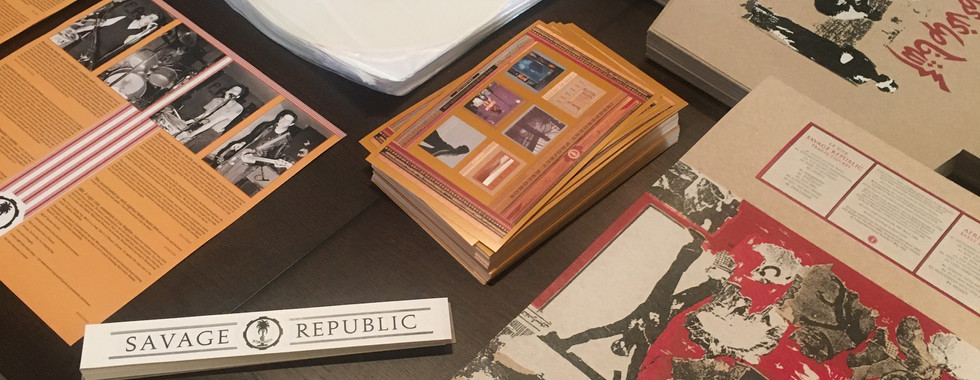
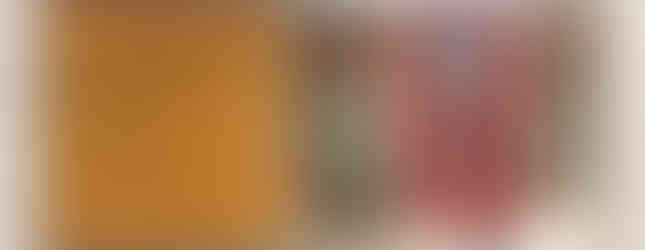

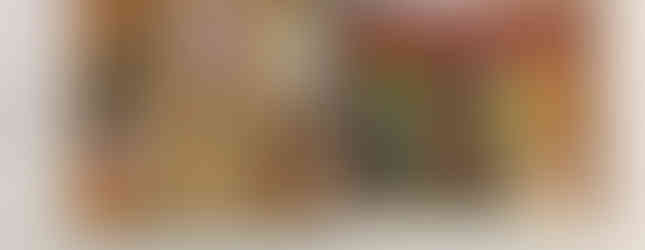



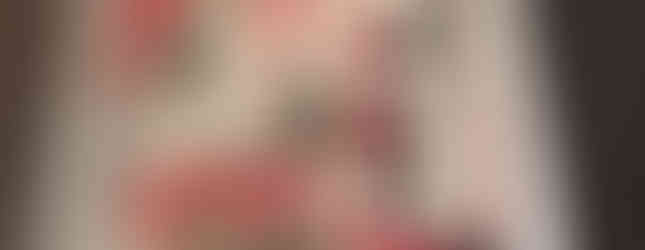







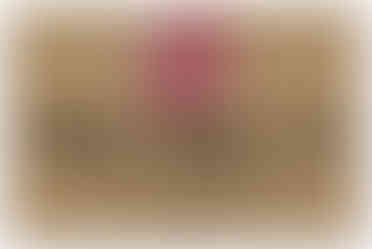



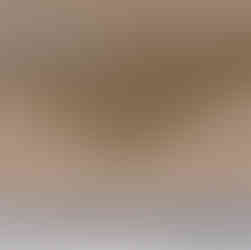













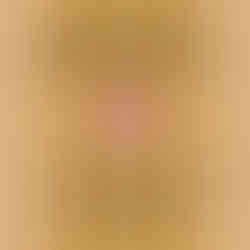

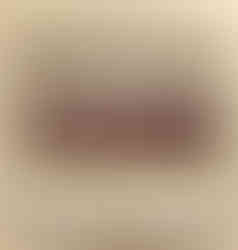











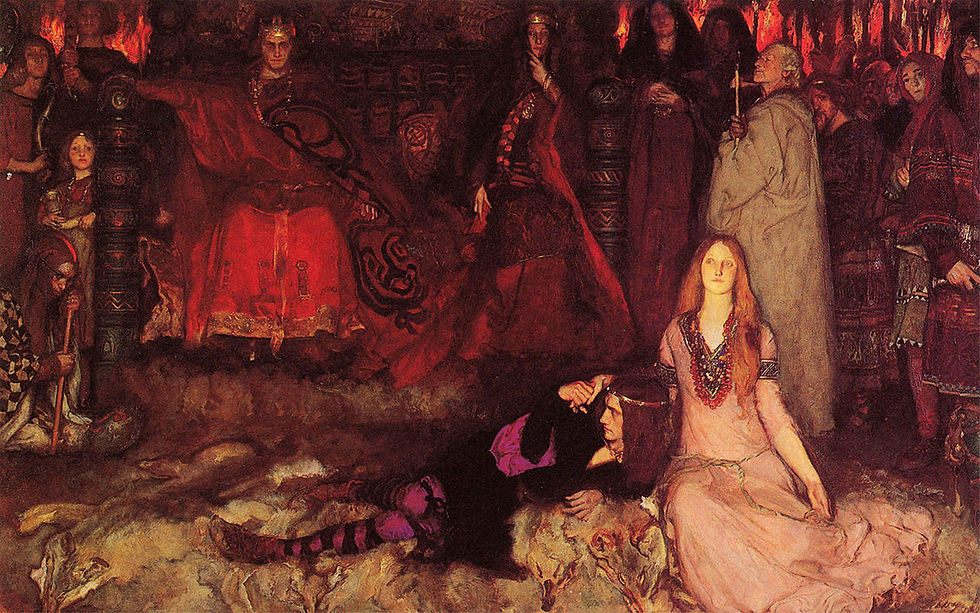
Comments